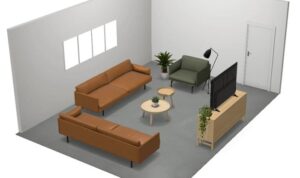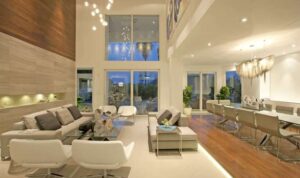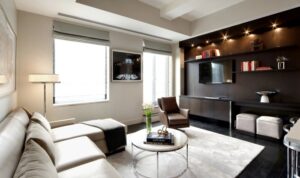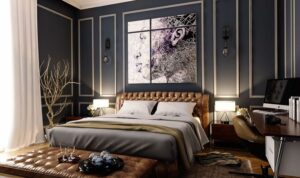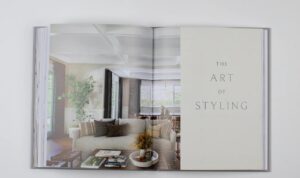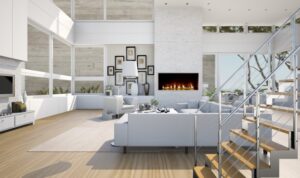Embark on a journey into the world of Bauhaus interior design, where innovation meets timeless elegance. Discover the origins, principles, and impact of Bauhaus design on modern interiors. Dive into the key characteristics that define this iconic style, setting the stage for a captivating exploration ahead.
Introduction to Bauhaus Interior Design
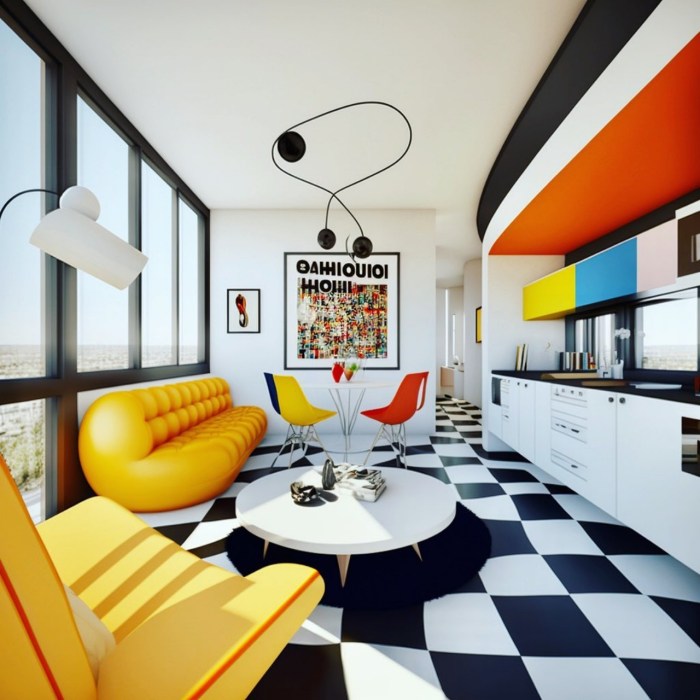
Bauhaus design originated in Germany in the early 20th century, focusing on the integration of art, craftsmanship, and technology. The Bauhaus movement aimed to create functional, minimalist designs that were accessible to all.
The key principles of Bauhaus design include the use of clean lines, geometric shapes, and a focus on functionality over ornamentation. This approach to design was revolutionary at the time and has had a lasting impact on modern interior design trends.
Key Characteristics of Bauhaus Interior Design
- Minimalist approach with clean lines and simple shapes
- Emphasis on functionality and practicality
- Integration of art, craftsmanship, and technology
- Use of primary colors and basic materials like steel, glass, and concrete
- Open floor plans and flexible living spaces
Influence of Bauhaus on Modern Interior Design Trends
- Bauhaus design principles have influenced contemporary interior design, with an emphasis on simplicity and functionality
- Modern furniture designs often draw inspiration from Bauhaus, featuring clean lines and geometric shapes
- The use of primary colors and basic materials in interior design can be traced back to Bauhaus influences
- Open floor plans and flexible living spaces reflect the Bauhaus emphasis on adaptable environments
Color Palette in Bauhaus Interior Design
When it comes to Bauhaus interior design, the color palette plays a crucial role in creating a harmonious and balanced space. The typical color scheme used in Bauhaus interiors is characterized by bold and primary colors, along with neutral tones such as black, white, and gray.
Application of Color Theory in Bauhaus Design
In Bauhaus design, color theory is applied strategically to evoke certain emotions and create visual interest. The use of primary colors like red, blue, and yellow, combined with geometric shapes and clean lines, helps to achieve a sense of balance and order in the space.
Additionally, contrasting colors are often used to highlight specific elements and create a dynamic atmosphere.
Significance of Color in Creating a Bauhaus-Inspired Space
The choice of colors in Bauhaus interior design is not arbitrary; each color is carefully selected to serve a specific purpose. For example, red may be used to add warmth and energy to a room, while blue can create a sense of calm and tranquility.
By understanding the psychological effects of colors, designers can create spaces that are not only visually appealing but also conducive to the desired mood or atmosphere.
Furniture and Materials
When it comes to Bauhaus interior design, furniture and materials play a crucial role in defining the style and aesthetic of the space. The Bauhaus movement emphasized functionality, simplicity, and the use of innovative materials, which revolutionized the way people approached design.Iconic Furniture Pieces:One of the most iconic furniture pieces associated with Bauhaus design is the Wassily Chair, designed by Marcel Breuer.
This chair features a tubular steel frame and leather straps, showcasing the Bauhaus emphasis on combining industrial materials with minimalist design principles. Another famous piece is the Barcelona Chair, designed by Ludwig Mies van der Rohe, known for its sleek leather cushions and chrome frame.Materials Used:Common materials used in Bauhaus interior design include steel, glass, leather, and chrome.
These materials were chosen for their durability, simplicity, and modern aesthetic. Bauhaus designers believed in using materials honestly and showcasing their natural qualities without unnecessary ornamentation.Comparison with Other Design Styles:Bauhaus furniture is often compared and contrasted with other design styles, such as Art Deco and Mid-Century Modern.
While Art Deco features more ornate and decorative elements, Bauhaus design focuses on clean lines, geometric shapes, and functionality. Mid-Century Modern, on the other hand, shares some similarities with Bauhaus in terms of simplicity and minimalism but often incorporates more organic forms and natural materials.Overall, Bauhaus furniture stands out for its innovative use of materials, focus on functionality, and timeless design that continues to influence modern interior design trends.
Spatial Layout and Functionality
When it comes to Bauhaus interior design, spatial layout and functionality are key elements that shape the overall aesthetic and usability of a space. Bauhaus design principles emphasize open and functional spaces that prioritize both aesthetics and usability.
Emphasis on Open and Functional Spaces
In Bauhaus interior design, open spaces are essential to create a sense of flow and harmony within a room. Walls are often kept to a minimum or removed entirely to connect different areas seamlessly. This open layout not only enhances the visual appeal of the space but also allows for better functionality and flexibility in furniture arrangement.
Aesthetics and Usability in Bauhaus Design
Bauhaus design principles focus on achieving a balance between aesthetics and usability. Every element in a Bauhaus interior serves a purpose, whether it's a piece of furniture or a decorative object. Clean lines, geometric shapes, and minimal ornamentation are common features that not only enhance the visual appeal but also contribute to the overall functionality of the space
Maximizing Space Efficiency
Bauhaus interior design is known for its efficient use of space. Furniture pieces are often multi-functional, serving more than one purpose to maximize the usability of a room. For example, a simple table may also function as a storage unit, or a sofa could double as a bed.
This approach not only saves space but also adds to the practicality and versatility of the design.
Lighting in Bauhaus Interiors
Lighting plays a crucial role in enhancing the design elements of Bauhaus interiors, emphasizing simplicity, functionality, and geometric shapes.
Types of Lighting Fixtures
- Ceiling Lights: Bauhaus interiors often feature sleek and minimalist ceiling lights to provide overall illumination.
- Wall Sconces: These fixtures are commonly used to highlight specific architectural details or artworks in a Bauhaus-inspired space.
- Floor Lamps: Bauhaus design incorporates floor lamps with clean lines and geometric shapes to add ambient lighting.
- Pendant Lights: These fixtures are used to create a focal point in a room while complementing the overall Bauhaus aesthetic.
Lighting Design and Ambiance
The lighting design in Bauhaus interiors contributes significantly to the overall ambiance of the space, creating a harmonious balance between light and shadow. By strategically placing lighting fixtures to accentuate key design elements, Bauhaus spaces achieve a sense of cohesion and unity.
Textures and Patterns
When it comes to Bauhaus interior design, textures and patterns play a crucial role in creating a cohesive and visually appealing space. Bauhaus designers were known for their innovative use of geometric shapes and patterns, which added a sense of dynamism and modernity to their designs.
By carefully balancing textures and patterns, they were able to achieve a harmonious aesthetic that emphasized simplicity and functionality.
Geometric Shapes and Patterns
In Bauhaus interior design, geometric shapes and patterns were heavily utilized to create visual interest and a sense of order. From simple lines and squares to more intricate patterns like chevrons and circles, Bauhaus designers embraced the use of geometric elements to add structure and rhythm to their spaces.
These patterns were often repeated throughout the design to create a sense of unity and coherence.
Balance of Textures and Patterns
One of the key principles of Bauhaus design was the idea of balancing form and function. When it came to textures and patterns, designers carefully considered how different elements would interact to create a harmonious whole. By incorporating a variety of textures, such as smooth glass, rough concrete, and sleek metals, alongside bold geometric patterns, Bauhaus interiors achieved a sense of balance and sophistication.
The juxtaposition of different textures and patterns added depth and visual interest to the spaces, while still maintaining the overall minimalist aesthetic that Bauhaus design is known for.
Integration of Technology
Technology plays a crucial role in modern interior design, and Bauhaus style is no exception. Bauhaus design seamlessly integrates technology into interior spaces to create smart and efficient living environments.
Smart Home Systems
One of the ways Bauhaus design incorporates technology is through the use of smart home systems. These systems allow for centralized control of lighting, heating, and other elements, enhancing the functionality and convenience of the space.
Innovative Lighting Solutions
- LED lighting: Bauhaus interiors often feature energy-efficient LED lighting solutions that not only reduce electricity consumption but also provide versatile lighting options.
- Smart lighting controls: Integration of smart lighting controls allows users to adjust the lighting ambiance according to their preferences, enhancing the overall aesthetic appeal of the space.
Incorporation of Sustainable Materials
Modern technologies have enabled the use of sustainable materials in Bauhaus design, promoting eco-friendly practices and contributing to a healthier living environment. For example, the integration of recycled materials and energy-efficient appliances aligns with the principles of Bauhaus design.
Closure
In conclusion, Bauhaus interior design offers a unique blend of form and function, creating spaces that are both aesthetically pleasing and highly functional. With its emphasis on simplicity, geometric shapes, and modern materials, Bauhaus continues to inspire contemporary interior design trends, making it a timeless choice for those seeking a sleek and sophisticated aesthetic.
FAQ Insights
What are the key characteristics of Bauhaus interior design?
Bauhaus interior design is characterized by its simplicity, clean lines, geometric shapes, and focus on functionality.
How does color theory play a role in Bauhaus design?
Color theory in Bauhaus design is used to create harmony and balance in spaces, often employing primary colors and bold contrasts.
What materials are commonly used in Bauhaus interior design?
Common materials in Bauhaus design include steel, glass, and leather, emphasizing a blend of modern and traditional elements.
How does Bauhaus interior design integrate technology?
Bauhaus design seamlessly incorporates modern technologies to enhance functionality and efficiency in interior spaces.

